MIT-UTM MALAYSIA SUSTAINABLE CITIES PROGRAM








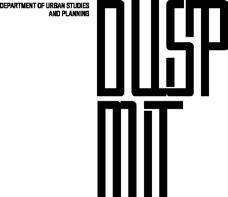 Figure 1. An offshore fishing post alongside the Forest City development on reclaimed land in the Strait of Johor. Photo Credit: Sera Tolgay, 2017
Figure 1. An offshore fishing post alongside the Forest City development on reclaimed land in the Strait of Johor. Photo Credit: Sera Tolgay, 2017
Students and faculty from the Massachusetts Institute of Technology (MIT) and the Universiti Teknologi Malaysia (UTM) joined in a two week Practicum in Malaysia from January 12-24, 2017.
One goal of the Practicum was to produce a Research Agenda for the ten Visiting Scholars who will participate in the MIT-UTM Malaysia Sustainable Cities Program (MSCP) in 2017–2018. The Agenda should help to focus their research and forge relationships with agencies, communities and organizations that can serve as research partners. MIT-UTM student-faculty teams met with public agencies, NGOs, private companies and community-action groups in Kuala Lumpur, Johor Bahru, Penang, Pahang and East Malaysia to identify questions related to sustainable urban development that might be the subject of scholarly inquiry. Our larger goal is to ensure that the work of the MSCP contributes to improvements in Malaysia as well as to sustainable development efforts throughout the developing world.
This year’s Research Agenda is different from those from previous years in that it also includes suggestions for Policy Memos. These Policy Memos would be addressed to specific federal ministries. They would be written by MSCP Scholars during the second half of their academic appointments (while they are in the United States), with the help of MIT students and faculty. Descriptions of potential Policy Memos are highlighted in each section of the new Research Agenda.
Students and faculty in the Practicum worked hard to formulate questions likely to be of shared interest to urban planners, engineers, public managers, corporate leaders, community activists and elected officials. In our view, Malaysia’s successful efforts to transform itself from a developing to a developed country deserve close scrutiny. In framing questions, we have tried to be mindful of what a single scholar (from outside the country) can accomplish in just four to five months. In each instance, after spelling out a question, we have tried to suggest a possible research strategy for pursuing that question. We have also listed agencies and organizations -- with which we have met directly -- which might serve as research partners. In conjunction with faculty advisors at UTM and MIT, the 2017-2018 Visiting Scholars will have the option of modifying our questions and proposing different research strategies. During the Fall 2017, the scholars will be gathering and processing data and collecting video footage in Malaysia. During their spring semester at MIT, they will convert their findings to video teaching materials that will be disseminated worldwide through MIT’s free, online platforms.
The MIT-UTM Malaysia Sustainable Cities Program (MSCP) focuses on sustainable urban development as seen through the lenses of social, economic and environmental well-being. This Research Agenda was developed by MIT and UTM urban planning graduate students and faculty following site visits to Johor Bahru, Kuala Lumpur, George Town (Penang), Pahang, and Kuching (Sarawak). In addition to location-specific questions, the research teams identified cross-cutting themes. These are described separately from the place-based questions listed under each city so that interested scholars can pair with other scholars to do comparative studies.
Kuala Lumpur is the largest city and the preeminent economic and cultural center of Malaysia. Seated at the heart of a 6.9 million person metropolitan area, the city is at the nexus of rapid development and modernization. The government aims to make greater KL and the surrounding Klang Valley one of the top 20 most livable cities by 2020. However, some ongoing projects along with KL’s 2020 plan are at times in tension with resident lifestyles within the many kampungs, traditional Malay villages that have amalgamated over time to constitute the city. Additionally, the vulnerable population was invisible in KL’s 2020 plan, which leads to potential threat to a stable society.
• KL1. Transportation: How can new sources of data be used to help planners mitigate congestion throughout Kuala Lumpur?
• KL2. Vulnerable Populations: How can Kuala Lumpur’s future city plans better serve the homeless and refugees?
• KL3. Stakeholder Engagement: What are overlapping and diverging stakeholder interests related to the development of Kampung Bahru and what room is there for a negotiated agreement?
Located at the southernmost boundary of peninsular Malaysia, separated by the narrow Straits of Johor, JB sits just across from Singapore. Over the past decade, JB has worked hard to enhance its international reputation, embarking on ambitious plans to expand its ports, attract foreign real estate investment, and develop its shoreline, partly through massive land reclamation projects such as the ongoing Forest City development. Johor state’s development also exists in the context of several pressing challenges, including both domestic and transboundary environmental management, difficulties coordinating its rapid, foreign-driven development, and the treatment of a growing population of migrant laborers.
• JB1. Large scale real estate development: How does the type of real estate development in Iskandar Malaysia impact the ability of local agencies and utility providers to offer basic services?
• JB2. Migrant labor: How do differences in the legal status of immigrant groups affect their access to public services and social mobility?
Pahang is the third largest state by land area in Malaysia and the largest in Peninsular Malaysia. The state encompasses the Pahang River basin, originating at the confluence of the Jelai and Tembeling rivers in the Titiwangsa Mountains and draining into the South China Sea. The Pahang group focused on the three districts in the northwest: Raub, Lipis and Cameron Highlands. This region’s economy relies heavily on extractive industries, such as palm oil and mining, and tourism. The group identified three questions of particular importance relating to the effectiveness of various land settlement models, the factors that impede agricultural waste-to-energy programs, and stakeholder engagement and environmental impact assessment processes for inter-state water transfers and internationally funded mega-projects.
• PH1. Land Settlement Models: Based on a study of several types of land settlement models in Pahang, how effective are these projects in improving the economic and social welfare of low-income people in the region and what are the strengths and weaknesses of each model?
• PH2. Waste to Energy: What are the economic, policy, and technological factors that impede oil palm mills from using their biological waste as renewable energy sources?
• PH3. Water Shortage and Transboundary Issues: Given current shortages in local water supply due to contamination and inadequate infrastructure in Cameron Highlands, Kuala Lipis, and Raub and the shortages occurring elsewhere in mainland Malaysia, how are government agencies and stakeholders engaging in the development and the completion of the Pahang-Selangor Raw Water Transfer Tunnel Project?
The state of Penang includes Penang Island and Sebarang Perai (part of the mainland) on the northwestern coast of Peninsular Malaysia. Penang is set apart from many other states because of its strong civil society, state leadership by the national opposition party, and its ethnically diverse population. Penang offers a unique setting for research related to transportation planning and implementation, coastal land reclamation, fisheries, water security, and housing affordability, within a context of governmental coordination, civil society, and historic preservation.
• PE1. Water Security: How can Penang improve its water security most effectively (given the range of interventions such as water transfers between states, policy, planning, and improved physical infrastructure)?
• PE2. Fisheries: What are the preconditions for managing fisheries in the areas of the proposed southern land reclamation?
• PE3. Infrastructure Finance: How have non-traditional financing mechanisms such as land reclamation been used in the provision of transportation infrastructure in Penang?
• PE4. Sustainable Travel: What are the impacts of initiatives to reduce automobile dependence in Penang and to what extent will future plans affect non-automobile accessibility?
• PE5. Housing Affordability: What are the overall trends driving the housing affordability gap in Penang Island and what dynamics are unique to George Town?
Sarawak is one of two Malaysian states located on the island of Borneo in East Malaysia. The state capital, Kuching, serves as a hub for the government-promoted tourism and material export activities, which in turn are drivers of ecological and environmental change throughout the region. Thus, sustainable urbanization in Sarawak depends on multi-scale questions of environmental governance, ecosystem management, and land rights.
• KU1. Industry Planning and Renewable Energy: Does large scale renewable energy infrastructure attract industrial development as expected (by federal planning authorities) and provide sufficient economic benefits to its host communities (or intended recipients)?
• KU2. Displacement and Housing Affordability: How does rural–urban migration affect the legal rights and social vulnerability of indigenous groups?
• KU3. Cultural Tourism and Rural Development: How effective is cultural-tourism as a means of promoting rural development?
• KU4. Industry as Parastate: To what extent does the infrastructure put in place to support the development of extractive industries facilitate subsequent commercial development?
• KU5. Waterfront Development: How have commercial and industrial uses of the Sungai Sarawak evolved over time, and which uses have been encouraged or discouraged by state officials and riverfront development schemes?
Kuala Lumpur is the largest city and the preeminent economic and cultural center of Malaysia. Seated at the heart of a 6.9 million person metropolitan area, the city is a nexus of rapid development and modernization. The government aims to make greater KL and the surrounding Klang Valley one of the top 20 most livable cities by 2020. Planners and policymakers are also striving to establish Kuala Lumpur as a “World Class City.” Their efforts include billion-ringgit projects, such as the Mass Rapid Transit(MRT), a ‘river of life’ project to revive Sungai Klang and Sungai Gombak; fighting against street crime; and achieving success in attracting multinationals. However, some ongoing projects are at times in tension with resident lifestyles within the many kampungs, traditional Malay villages that have amalgamated over time to constitute the city.
In many ways, KL epitomizes the tension between tradition and globalization that is affecting many world cities; alleys lined with streetfood stalls and peaked-roof Malay houses lie in the shadow of the futuristic Petronas Towers and a modern financial district. The city’s rapid change and increasing globalization raise many questions about the sustainability of its growth and how the benefits of development ought to be distributed.
How can new sources of data be used to help planners mitigate congestion throughout Kuala Lumpur?

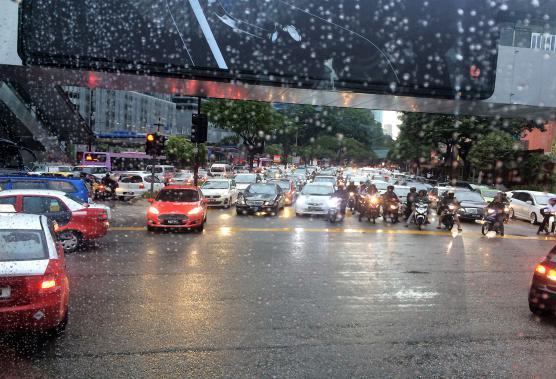
Malaysia has witnessed an explosive rise in the demand for transport in recent decades in conjunction with its rapid economic growth. The country is heavily dependent on private vehicles, especially in Kuala Lumpur (KL). In the Klang Valley, the region in KL with the highest rate of vehicle ownership, there are 6 million people, 11 million cars, and 9 million motorcycles. The average car ownership is 1.83 per capita. As population climbs and private vehicle adoption rates continue to rise, it will become increasingly difficult to reduce already widespread congestion.
Currently, the government hasn’t conducted travel behaviour surveys or traffic surveys in KL, which constrains the ability to map out the the areas of, time of and reason for congestion throughout KL.Recently, Uber has agreed to release geospatial data based on its drivers and riders. Such data can conduct complex analysis on transportation patterns which allows for better decision making around future infrastructure investments.
The researcher can use new streams of data such as Uber Movements, which releases ridesharing data in Kuala Lumpur. This data could help detect travel patterns and times of congestion throughout the city and further help plan for induced traffic by development. These data sets can be analyzed to understand mobility patterns, home and work locations.
Furthermore, public opinions on ridesharing could be documented through surveys. Other characteristics, including economic development strategy, environmental impact, and the quality of public transit service could be documented through conducting a literature review, performing a statistical analysis, and interviewing local experts and transportation officials.The study can also look into development documents to view what traffic mitigation measures, if any, are currently in place.
With Kuala Lumpur’s goal of achieving 40% public transit modal share in the the future, it is important to incentivize developers and the city to limit cars. As their own plan for 2020 states, there are policies that promote car usage--such as low gas prices, low financing, and low parking costs throughout the city. The government has this recommendation, but collects limited data to help these issues. This research can help Kuala Lumpur create policies and guidelines for future development that can limit the addition of cars. Further potential for researching Uber usage can help the city understand what demographic of the population takes Uber and whether there is a perception issue with the public transit in the city. Are there tensions with traditional taxi drivers and these new drivers.
• Uber. Uber has recently released ridesharing in KL and this dataset could be used to detect travel patterns and times of congestion throughout the city https://movement.uber.com/cities
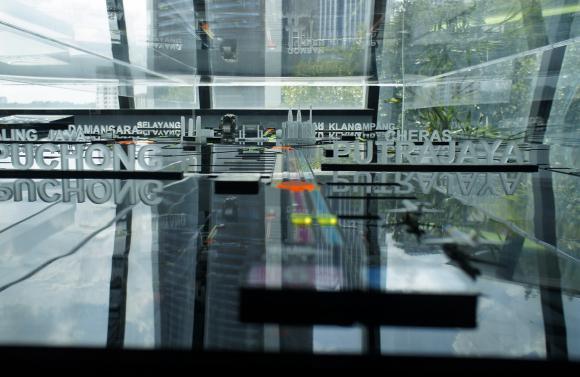
• Tumpang.la. Tumpang is a private company that run Malaysia’s first on-demand transport service for the last mile.
• Dr. Rosilawati bt Zainol. Dr. Rosilawati is member of the Center for Transportation Research
• “Kuala Lumpur Structure Plan 2020 : Transportation.” Kuala Lumpur Structure Plan 2020 : Transportation. Accessed February 02, 2017. http://www.dbkl.gov.my/pskl2020/english/transportation/.
• “PM’s call for poor Malaysians to become Uber drivers lauded.” Malay Mail Online. October 21, 2016. Accessed February 02, 2017. http://www.themalaymailonline.com/malaysia/article/pms-call-for-poor-malaysians-to-become-uber-drivers-lauded.
• w HAT IS THE SPATIAL d ISTRIBUTION O f HOMELESSNESS IN KL; w HAT ARE THE MAIN REASONS f OR HOMELESSNESS ?
• w HAT ARE THE d EMOGRAPHI c c HARA c TERISTI c S O f RE f UGEES IN KL AN d w HAT ARE THEIR c URRENT LI v ING c ON d ITIONS ?
• H O w c AN MUNI c IPALITIES USE THEIR LEGAL RESOUR c ES TO SUPERSE d E f E d ERAL STATUTE IN OR d ER TO HELP THE RE f UGEE POPULATION ?
Despite Kuala Lumpur’s rapid urbanization and modernization, a significant portion of the city’s population remains vulnerable, including the homeless and refugees.
Kechara Soup Kitchen (KSK) is a non-religious community action group that distributes food, basic medical aid, and counselling to the homeless and urban poor of Malaysia. Established in 2006, 60,000 KSK volunteers have distributed over 800,000 meals in Klang Valley, with KSK also establishing branches in Penang and Johor Bahru. For a decade, KSK has kept profiles of its customers, giving it abundant data on the homeless in Kuala Lumpur. There are a range of causes of homelessness in Kuala Lumpur, from economic factors such as unemployment and rising living expense, to social factors such as drug use and divorce. However, the government denied the reality of homelessness and the homeless is therefore invisible in KL’s 2020 plan.
A large number of KSK’s customers are refugees, coming mainly from Myanmar and the Philippines (Justin Cheah). Economic migration and religious or ethnic persecution are the predominant reasons why refugees come to Malaysia. As a non-signatory to the UNHCR 1951 convention, Malaysia can legally reject refugee entry. The Malaysian government does not cater to refugees in KL in its urban planning and other relevant policies. While the United Nations does provide a card to state refugee status, the country of Malaysia does not recognize any form of legal stay, creating a form of second class citizenry where a segment of the population cannot function normally in their day-to-day life. However, refugees contribute to economic growth since they make up a large segment of the country’s foreign labor force. Additionally, even if the government holds a negative attitude toward refugee problems in KL, refugee numbers are expected to continue to grow, which leads to potential threat to a stable society.
First, the Kechara Soup Kitchen database can be used to map the distribution of homelessness and provide proxies to derive the reasons for homelessness in KL. A scholar could utilize such data and conduct interviews with KSK clients to map “hotspots” for homelessness in KL, conclude the major reasons for the problem, and research how homelessness relates to refugees. Second, current regulations regarding refugees in Malaysia need to be reviewed to identify ways to better serve the homeless and refugees in KL.
Third, using AAM’s refugee database, researchers can study the living conditions of refugees. A scholar can also study legal documents to find the extent that individuals outside the government and NGOs can provide resources to vulnerable populations. Although the government may deny the realities of the homeless and refugees, these are populations that require services and infrastructure which deserve a planner’s attention.
Uncovering the spatial distribution and current living conditions of urban vulnerable population could set up a foundation for policy recommendations. Policy makers and urban planners need to be aware of the realities of the homeless and refugees and consider their welfare, such as providing affordable housing and skill training program. As homeless and refugees in KL are currently served largely by NGOs, this study could also discuss the role of both the public and private sectors in providing services and support to the homeless and refugees.
• Kechara Soup Kitchen (KSK). KSK is interested in utilizing their dataset to raise the awareness of homelessness of the general public.
• AsylumAccessMalaysia(AAM). AAM is a Malaysian-registered NGO and part of the Asylum Access family of organizations. AAM’s on-the-ground operations include direct legal services for refugees and asylum seekers, Know-Your-Options trainings, and engagement with UNHCR and other stakeholders in Malaysia’s refugee rights movement. AAM also maintains a database of refugees and how services are provided to them.
• Kaur, Amarjit. “Refugees and refugee policy in Malaysia.” UNEAC Asia Papers 18, no. 1 (2007):77-90.https://e-publications. une.edu.au/vital/access/manager/Repository/une:7053
• “Malaysia/Burma: Living In Limbo.” Malaysia/Burma: Living In Limbo. Accessed February 02, 2017. https://www.hrw.org/ reports/2000/malaysia/.
• East, 101. “Malaysia’s Unwanted.” Al Jazeera English. Accessed February 02, 2017. http://www.aljazeera.com/ programmes/101east/2014/11/malaysia-unwanted-20141118111742722400.html.
• Jazeera, Al. “Malaysia: Muslim countries should end Rohingya crisis.” News | Al Jazeera. January 19, 2017. Accessed February 02, 2017. http://www.aljazeera.com/news/2017/01/malaysia-muslim-countries-rohingya-crisis-170119125547603.html.
What are overlapping and diverging stakeholder interests related to the development of Kampung Bahru and what room is there for a negotiated agreement?

In 1900, Kampung Bahru became the only Malay Reserve Area established by a gift from His Royal Highness YMM Sultan Abdul Samad. As a result of a government gazette in 1951, all land in Kampung Bahru must remain in perpetual Malay ownership. At the same time, a self-governing authority for the seven villages called the Malay Agricultural Settlement (MAS) was formed, with representation from each village through an elected village head.In order to facilitate development in Kampung Bharu, the City of Kuala Lumpur launched the Kampung Bharu Development Corporation (PKB) in 2012 to replace the resident’s board of management. The Landowners Association (PPTWT) was formed recently by a group of landowners in Kampung Bahru and they wanted to develop their own land.
The PPTWT is currently working closely with PKB to develop a Kampong Bahru City Center Plan (KBCC). The landowners engaged with PPTWT have managed to acquire the signatures of twenty lot owners totalling four acres of land. Together, they are willing to develop their parcels of land, MASA Depan, in order to create office space and a hotel. The landowners are excited to start the development after receiving private funding from foreigners. This is creating tension between the landowners, kampong residents, and MAS.
Previous research has explored the process that landowners have gone through to get their own development inside the Kampung without interference from the KL City Hall (DBKL), the central planning office. Going off this research, the scholar can observe the development as its proponents begin to gauge community perception through stakeholder engagement. This can occur through the creation of a stakeholder matrix and/or a conflict assessment.
As construction of the the office building and hotel in Masa Depan begins, the scholar can then research the effects that the development will have on the rest of the kampung and for further down the line research--does it spur development? Does the community feel that it is the best use of their resources? Who now holds the capital in the kampung? Does the area change with foreign investments? How do different actions by the landowners leading development in Kampung Bahru create “domino effects” and affect negotiation techniques?
The research should assist residents in formulating a response to proposed development in areas where it still may not adequately address or encompass the needs of the all the various key stakeholders.
• MalayAgriculturalSettlement(MAS). MAS has implemented a resident census at the beginning of 2016 that will, for the first time, including renters. MAS might be a helpful first connection to the community. MAS has made efforts to reach out to the renting and immigrant populations in Kampung Bahru, however the organization currently works largely with landowners
• LandownersAssociationof KampongBharu(PPTWT). Body that oversees the development of Masa Depan.
• KampongBahruDevelopmentCorporation(PKB). Government organization that develops plans for Kampong Bahru. They have a master plan for the area.
• KualaLumpurCityHall(DBKL). Planning department for Kuala Lumpur.
• FUJITA, M. A. (2010), Forays into Building Identity: Kampung to Kampong in the Kuala Lumpur Metropolitan Area. Journal of Architectural Education, 63: 8–24.
As homeless and refugee populations in KL are currently served largely by NGOs, a policy memorandum could address: 1) what kind of preferential policies the municipality could offer to the NGOs to support their work; 2) what programs the government could provide to support the vulnerable population in KL?
Located at the southernmost tip of peninsular Malaysia, Johor Bahru (JB), the capital city of Johor state, sits just across from Singapore. Thus, it is a common entry point into Malaysia for tourists and businesspeople. JB is becoming increasingly attractive as an affordable alternative to more expensive Singapore. Johor’s proximity to and interconnectedness with its wealthy neighbor generates a variety of transboundary issues related to water provision, environmental protection, and shipping channel access. These issues require management by local and regional entities,. In addition to these international challenges, Johor must increasingly contend with domestic cross-jurisdictional resource management questions. Johor is both negotiating a water supply agreement with northern neighbor state, Malacca, and arranging the water supply and other infrastructure for numerous, emerging, large-scale real estate projects within the state.
Over the past decade, government entities in JB have worked hard to enhance its international reputation, embarking on ambitious plans to expand its ports, attract foreign real estate investment, and develop its shoreline through massive land reclamation projects. Recent large-scale development has received a variety of criticism, including for its negative environmental impacts. While most developers claim to have consulted with locals and conducted environmental review, limited environmental improvement has resulted. The local political climate makes it difficult for environmental advocates to directly critique such projects.
How does the type of real estate development in Iskandar Malaysia impact the ability of local agencies and utility providers to offer basic services?
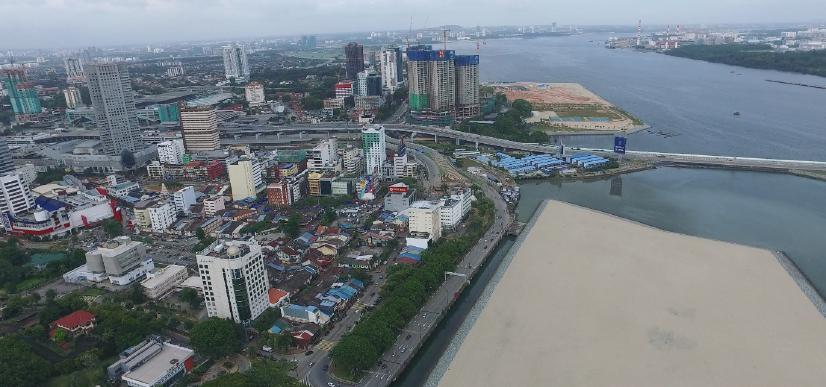
Historically in the economic shadow of booming neighbor Singapore, Johor has attracted substantial foreign investment over recent decades, particularly since the 2006 establishment of Iskandar Malaysia (IM), a special economic development zone covering the state’s southern tip. Local agencies have expended significant effort attempting to shepherd development in accordance with planned geographic nodes and towards a number of priority sectors. However, IM’s recent emergence as a prominent site for investment by foreign, particularly Chinese, real estate developers has largely fallen outside the scope of regional plans. Luxury housing mega-projects are sprouting rapidly along the Johor coastline, especially on reclaimed land in the narrow straits separating Malaysia and Singapore.
While proponents of these projects promise major economic benefits to the region, their sheer scale, speed, and apparent lack of inclusion in regional plans raises concerns. Prominent among these are questions about the feasibility of and responsibility for the provision of basic infrastructure services to the new projects, the largest of which, Forest City, aims to attract 700,000 new residents alone. Many of the units under construction are classified as commercial service apartments rather than residential, meaning that, under Malaysian law, the developer is not always responsible for providing basic public amenities (such as water and sewage infrastructure) for them. It remains to be seen to what extent this classification will place an undue burden on utilities and service agencies.
Attempt to collect data from sources including the Iskandar Regional Development Agency (IRDA) and PropertyPriceTag.com on distribution and extent of planned commercial and residential developments, as well as planned infrastructure. Estimate the extent of infrastructure provision and shortfall if apparent. Map pattern of infrastructure demand and supply. Interview IRDA, local government, and developers for context.
Rapid, foreign investor-led real estate development is by no means exclusive to Johor. Research on this topic could generate important conclusions for countries across South East Asia and beyond. For instance, it could highlight the need for careful integration of real estate development into regional planning efforts, or for new approaches to sharing the public and private burden of basic amenities.
• IRDA. The agency developed the IM regional plan and now works with private and public stakeholders to facilitate its achievement. Could provide detailed information on the IM plan, data on real estate development, further contacts, and an insightful perspective on the role of regional planning.
• Iskandar Investments Bhd. The group operates as a strategic public developer to attract and catalyze development in IM. Potential source of information on JB real estate trends, the relative roles of the state and private sectors in spurring development, and developer contacts.
• Cha-LyKoh,PropertyPriceTag.com. Cha-Ly Koh’s website maintains data about real estate transactions and property values in Malaysia that could be useful in analyzing
• CountryGardenHoldingsLtd. The Chinese firm is the developer for both Danga Bay and the Forest City real estate projects. Runze Yu is chief strategy officer.
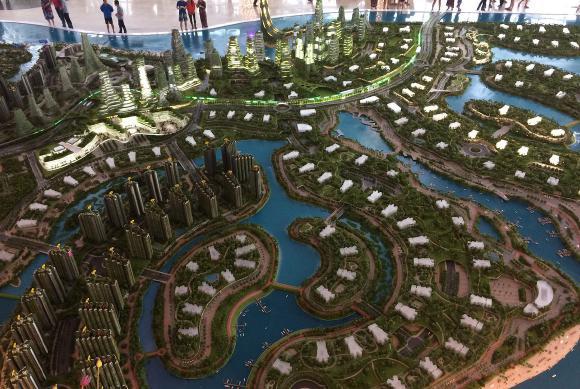
• SAJ(Localwaterconcessionaire). The company supplies water to customers throughout Johor in addition to delivering water to Singapore.
• Sunway Property REI. Another developer working in IM, noted anecdotally for taking a more socially responsible approach to development than may be typical.
Real estate investment is set to play a prominent role in Malaysia’s development throughout the coming decades, and foreign investment will likely continue to act as the main driver. Many current developers are taking a shorter term view than past developers, with the objective of building and selling off new projects as quickly as possible. In this context, how can Malaysian government entities ensure that new real estate projects contribute both to short term economic gains and longer term societal and economic benefits while fitting into existing planning frameworks?
How do differences in the legal status of immigrant groups affect their access to public services and social mobility?
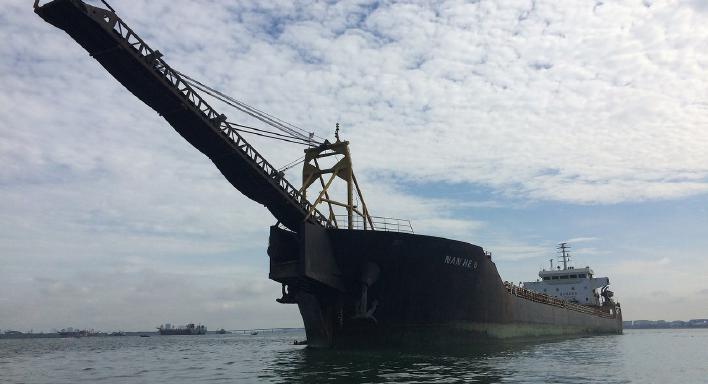
While immigrants and migrant workers who reside legally in Malaysia have access to similar public services and amenities to residents, those without legal documentation are largely excluded from services such as public education and subsidized medical care. For legal immigrants, the ability to freely and cheaply access these services appears to reduce costs, increase choice, and improve quality of life. In contrast, undocumented residents must often resort to time intensive and costly work arounds in their daily lives, including sending their children to private schools, leaving Malaysia on a monthly basis to renew their tourist visas, paying full medical expenses out of pocket, working longer hours for lower pay, and paying expensive rents as they cannot own their own property.

Immigrants in the same migrant villages display vastly different levels of wealth, employment level, and social mobility based on their varying legal statuses. With half of the four million migrant laborers in Malaysia lacking legal documentation, the difference in access is a critical public problem (Aw 2016). Recently, migrant labor has emerged as a hot button issue in Malaysia. At the start of 2016, the federal government announced a plan to bring an additional 1.5 million migrant laborers into the country. This announcement prompted an immediate backlash from those concerned about migrants displacing native workers and increasing crime. The government postponed the plan in response.
Examine quality of life indicators and social mobility differences between documented and undocumented first and second generation immigrants. Gather qualitative and quantitative data through interviews with laborers, migrant-focused NGOs, and government partners and through available government records. Collected data could focus on metrics including economic performance, labor market assimilation, educational attainment, change in net personal wealth, change in personal salary,
etc. A particular area of focus could center on the difference in outcomes between Cambodian refugees legally allowed into the country through a UN refugee program until 1991 and those entering the country after the termination of this program. Scholars should note that working with immigrant groups is substantially easier if they are from the same country of origin.
In an increasingly populated and resource strained world, local, regional, and national level government entities must partner with one another more broadly and deeply to achieve workable and sustainable resource management programs. An examination of the strong interconnected relationship between JB and Singapore juxtaposed with their divergent development stages and resource management trajectories should allow a scholar to distill best practices and pitfalls to avoid around the management of other shared transboundary resources.
• Independent Democracy of Informal Economy Association. A Cambodian NGO and Labour Union working for Cambodian migrants.
• North South Initiative. A Malaysian human rights NGO based in Kuala Lumpur with a focus on migrant laborers.
• KampungMulia. A village built and populated entirely by Cambodian refugees and migrant workers close to Ulu Tiram, Johor.
• SokSerey. 2016-2017 MSCP Scholar working on Cambodian migrant labor issues.
• MalaysianMinistryof HomeAffairs. Ministry tasked with overseeing migrant labor.
• Aw, T. (2016). ‘Malaysia’s Immigrant Worker Debate’, New York Times, March 28, 2016. Background article on the politics around migrant laborer in Malaysia: https://www.nytimes.com/2016/03/29/opinion/malaysias-immigrant-worker-debate.html.
Pahang is the third largest state by land area in Malaysia and the largest in Peninsular Malaysia with a surface area of ~36 thousand square kilometers. In 2015, Pahang had a population of 1.623 million people, making it the 9th most populous state in Malaysia. Its state capital, Kuantan, is the 9th largest city in Malaysia with a population of approximately 608,000 in 2010. Northwest Pahang is home to three districts: Cameron Highlands, Lipis, and Raub, with populations of ~40,000, ~20,000, and ~80,000 people respectively. The economy of these districts, along with most of the state, relies largely on agriculture and extractive industries, with tourism especially prevalent in the temperate highlands.
The state of Pahang is mostly rural. Cities have set out to promote industrial activities, attempting to increase their population and workforce in the near future. Tied to population increases, cities are obligated to increase the volume and quality of the services they provide - water and electricity supply have been identified as key issues by various parties. Given the state’s principal economic activities and current priorities, three important research issues facing the region are: (1) the long-term viability of the many agricultural settlements established to develop the land and boost the incomes of the poor, (2) how to best utilize waste generated by extractive and agricultural industries with large carbon footprints, and (3) water shortages due to contamination and failing infrastructure.
Based on a study of several types of land settlement models in Pahang, how effective are these projects in improving the economic and social welfare of low-income people in the region and what are the strengths and weaknesses of each model?
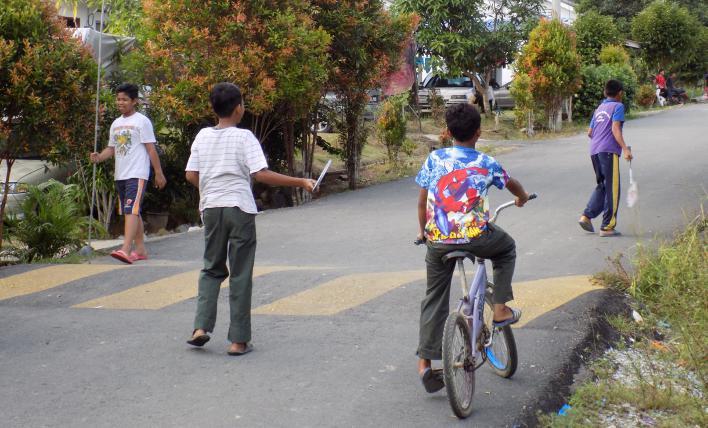

• H O w ARE RESI d ENTS f OR THE d I ff ERENT T y PES O f LAN d SETTLEMENTS
c HOSEN , AN d ARE THESE SELE c TION POLI c IES E ff E c TI v E IN PRO v
•
•
•
Land settlement programs are designed to develop rural areas and alleviate poverty by giving participants access to housing and/or land and resources to cultivate. Established in 1956, the Federal Land Development Authority (FELDA) was among the earliest of these programs, providing economic opportunity to poor Malays. Other settlement schemes have cropped up in subsequent decades including those associated with the Rubber Industry Smallholders Development Authority (RISDA) and those established by private companies with support of the government, such as IRIS Corporation’s Rimbunan Kaseh in Kuala Lipis. Each has adopted a different model for alleviating poverty; for example, while FELDA settlements focus on oil palm cultivation, RISDA settlements focus on rubber extraction, and corporate-established settlements may focus on alternative forms of agriculture such as fish farming and agricultural exports like durian and rock melon.

As a new generation replaces the original FELDA participants, it is timely to think about whether these development schemes still make sense, and if so, whether the policies need any adjustment to make them more effective. With its large amount of rural area, Pahang is home to numerous land settlement communities, making it an ideal location to conduct this research. While many have touted the success of these models in achieving their goals of development and poverty alleviation, others highlight serious issues bubbling beneath the surface including problems with drug addiction, lack of work ethic, and youth flight. Specific topics to explore include:
• The incentives (or disincentives) these settlement models provide for participants to work (e.g., FELDA participants hiring foreign workers to cultivate the land given to them under the program).
• The large number of vacancies in many settlements and how this links to the availability of public services like schools and community centers that vary across models.
• The main causes of youth flight and how impediments to land transfers between generations contribute to this phenomenon.
A scholar might conduct a comparative study of different land settlement models in Pahang, including RISDA’s Agropolitan Gahai, FELDA Krau, and IRIS Corporation’s Rimbunan Kaseh. This study could include interviews and surveys of current residents and municipal officials to better understand such factors as the number of people working per household, average monthly income per household, number of vacancies in the settlement, extent to which public services are provided, villager contentment, level of community engagement, and how residents are chosen for each project. If possible, it might be interesting to compare metrics on economic and social welfare of participants in these programs with a control group of others with similar characteristics who do not live in these settlements. Special focus could be given to young people in each settlement, interviewing them about their motivations for participating in or leaving these settlements. Complementing this fieldwork with existing literature outlining the original intentions and history of these programs, the researcher would likely be able to gain an understanding of the effectiveness of these projects in improving the economic and social welfare of their residents and if and how these programs should be tweaked to fit the needs of future generations.
PAHANG
The conclusions of this research could inform government policy related to these programs both in Pahang and other parts of Malaysia. It could also help to illuminate best practices for other developing countries in Southeast Asia and around the world that currently employ or seek to employ land use settlements as tools for economic development and poverty alleviation.
• Penghulu Jamaluddin. Local leader with connections in land settlement villages in the area. Worked with previous scholars and can connect new scholars to contacts in the organizations below.
• RISDA’sAgropolitanGahai,Lipis

• FELDAKrau,Raub
• LipisDistrictandLandOffice. District office with specifics on the two land settlement villages above.
• IRISCorporation’sRimbunanKaseh,Lipis
• Raub District Council Office. District office with specifics on the land settlement community above.
What are the economic, policy, and technological factors that impede oil palm mills from using their biological waste as renewable energy sources?
Malaysia is the 2nd largest palm oil producer in the world. This commodity plays a significant role in the country’s economic growth. In 2014, 16% of Malaysia’s available land was used for the growth of oil palms, producing ~19.7 million tons of palm oil. The industry contributed over USD $22.31 billion to the country’s GNI in the same year, making it the 4th largest source of national income (Awaluddin et al, 2015).
The substantial amount of oil palm waste generated by the growing industry is creating an overload problem. Palm oil represents only 10% of the total oil palm biomass. The remaining biomass is waste. In 2012, an estimated 83 million tons (dry weight) of oil palm biomass waste was available throughout Malaysia. It’s projected that these wastes will rise to around 100 million tons by 2020 (Awaluddin et al, 2015). Approximately 25% of solid wastes are in a form which can be used as biomass in direct combustion to generate electricity in palm oil mills or injected into anaerobic digesters that generate biogas.
Malaysia’s Ministry of Energy, Water and Green Technologies (KeTTHA) has stated its intention to diversify Malaysia’s energy mix. Since the early 2000’s, Malaysian government agencies have made a series of efforts to promote the use of palm oil waste as a source of fuel such as the implementation of a Feed-In Tariff system for renewable technologies by the Sustainable Energy Development Agency of Malaysia (SEDA). However, only a small fraction of the targets set have been accomplished.
The scholar could go to three or four oil palm mills owned by FELDA Palm Industries SDN. BHD. (FPISB) around Kuala Lipis in the state of Pahang in order to be fully familiarized with the palm oil production process. It’s important that the scholar visit either Felda Global Ventures’ (FGV) FTJ Bio-Power 12.5 MW biomass power plant in Jenka, Pahang (operational since 2014) or the 7.5 MW Sahabat Biomass Power Plant in East Malaysia which has been using oil palm biomass as fuel since 2006. The scholar could develop a case study on either of these sites, focusing on what has enabled them to use palm oil waste as energy.

The scholar may conduct a series of interviews with employees from FPISB in order to identify the main obstacles to this issue from the process side, ideally interviewing FPISB mill operators, process engineers, and managers. Furthermore, the scholar might interview officials from KeTTHA and SEDA to fully understand the current programs and policies in place to promote the use of oil palm waste as a source of fuel and, from their point of view, what has stopped further development of the use of oil palm as fuel. The scholar will try to identify the priorities of each agency and understand the economics and motivation behind the policies implemented by KeTTHA and SEDA. Furthermore, the scholar should reach out to Professor Philip Jennings, a researcher at Murdoch University in Perth, Australia. Prof. Jennings would be an ideal consultant for this project as he has published various articles in recent years that look into the conversion and use of oil palm waste as energy in Malaysia.
If possible, along with identifying the key technical, economic, and policy barriers for the use of oil palm waste as energy, the scholar could attempt to identify the financial, social, and environmental benefits of such waste-to-energy projects in Malaysia and suggest modifications to current policies and programs in order to significantly increase the use of oil palm waste as fuel throughout the country.
Malaysian government agencies have made a series of efforts to promote the use of palm oil waste as a source of fuel. A Feed-In Tariff system was introduced in 2011 and is perceived as the country’s main enabler to integrate renewable energies as it guarantees renewable energy suppliers a fixed price for the electricity fed into the grid. Currently, renewable energy generators that produce electricity from agricultural waste are paid the listed electricity price plus 0.0786 Ringgits per kWh fed into the grid (SEDA Portal, 2017). Malaysia’s previous and current five-year plan have set an ambitious goal of having 2,080 MW of installed electricity capacity from renewable energy by 2020 of which 800 MW are expected to come from oil palm waste, grid-connected sources (Umar et al, 2013). However, according to SEDA, there is currently an installed capacity of 27.6 MW coming from all landfill and agricultural waste sources and 81 MW coming from all biomass sources (SEDA Portal, 2017).
If Malaysia were to use the entirety of the 100 million tons of palm oil waste it expects to generate by 2020, the country could potentially have an installed power capacity of more than 3,000 MW coming solely from oil palm waste. Providing perspective, in 2013, Peninsular Malaysia had an installed capacity of ~24,000 MW, Sarawak had an installed capacity of ~3,400 MW, and Sabah had an installed capacity of ~2,200 MW (Malaysia Energy Statistics, 2015). The use of oil palm waste as fuel holds tremendous promise as a means to diversify the country’s energy mix and reduce dependency on fossil fuels for energy production.
• FELDAPalmIndustriesSDN.BHD.Largest crude palm oil producer in Malaysia (2.5 million tons/year; 17% of Malaysia’s total production). Currently operates 69 palm oil mills throughout Malaysia.
• Ministryof Energy,Water,andGreenTechnology(KeTTHA). Received a grant from the Global Environmental Facility (GEF) to develop a detailed full project brief for a National Program on Grid Connected Palm Oil Biomass Power Generation. Project aims to identify and remove barriers to commercial utilization of biomass residue co-generation, including grid connected power generation in Malaysia.
• SustainableEnergyDevelopmentAuthorityMalaysia(SEDA). Manages the implementation of feed-in tariffs for various forms of Renewable Energies, including energy from agricultural waste.
• Prof. Philip Jennings. Emeritus Professor of Physics and Energy Studies at Murdoch University (Perth, Australia) with vast work on use of palm oil waste as energy in Malaysia.
• Awalludin, Mohd Fahmi, Othman Sulaiman, Rokiah Hashim, and Wan Noor Aidawati Wan Nadhari. “An Overview of the Oil Palm Industry in Malaysia and Its Waste Utilization through Thermochemical Conversion, Specifically via Liquefaction.” Renewable and Sustainable Energy Reviews 50 (October 2015): 1469–84.
• “Felda Palm Industries.” Accessed January 31, 2017. http://feldapalmindustries.com/v2/.
• “Laman Web Rasmi Kementerian Tenaga, Teknologi Hijau Dan Air.” Accessed January 31, 2017. http://www.kettha.gov.my/ portal/index.php?r=kandungan/index&menu1_id=2&menu2_id=65&menu3_id=118#.WI-IHFzLLMs.
• “SEDA PORTAL.” Accessed February 1, 2017. http://www.seda.gov.my/.
• Umar, Mohd Shaharin, Philip Jennings, and Tania Urmee. “Strengthening the Palm Oil Biomass Renewable Energy Industry in Malaysia.” Renewable Energy 60 (December 2013): 107–15.
In order to significantly increase and possibly fully utilize oil palm waste as a source of renewable energy,howshouldtheMinistryof Energy,WaterandGreenTechnologies(KeTTHA)andtheSustainable EnergyDevelopmentAuthorityof Malaysia(SEDA)modifycurrentpoliciesandprograms(e.g.Feed-In Tariffs)giventofacilitiesthatproducerenewableenergyfromoilpalmwaste?
Malaysia’s Ministry of Energy, Water and Green Technologies has stated its intention to diversify Malaysia’s energy mix. The country has established programs to promote the use of the millions of tons of oil palm waste produced on a yearly basis that can be used as biofuels to not only power the country’s oil palm mills but inject electricity into the grid. However, only a small fraction of the targets set by KeTTHA have been accomplished. Given that Malaysia’s palm oil mills are currently not tapping into the huge potential that exists from using the waste they generate as a source of fuel, it’s in the country’s best interest to identify the key barriers to achieving this goal and modify the current policies and programs that promote the use of waste as energy. Are further incentives required for oil palm mills to use their own waste as biofuel either for their own processes or to inject electricity into the electric grid? Should KeTTHA and SEDA provide grants to acquire and install the infrastructure needed to convert waste into energy? Should the subsidy differ depending on region and/or facility?
Given current shortages in local water supply due to contamination and inadequate infrastructure in Cameron Highlands, Kuala Lipis, and Raub and the shortages occurring elsewhere in mainland Malaysia, how are government agencies and stakeholders engaging in the development and the completion of the Pahang-Selangor Raw Water Transfer Tunnel Project?
• w HAT HAPPENS TO THE d ISTRI c TS AN d STATES w HEN THE f E d ERAL GO v ERNMENT TRIES TO SOLv E REGIONAL AN d NATIONAL w ATER IMBALAN c ES
w ITH TUNNELS AN d TRANS f ERS BET w EEN STATES , AN d d O THESE A dv ERSELy IMPA c T LO c ALITIES E x PERIEN c ING LO c AL w ATER SHORTAGES ?
• w HAT STAKEHOL d ER ENGAGEMENT O cc URS w HEN M ALAy SIA PLANS d OMESTI c TRANSBOUN d AR y w ATER TRANS f ERS THAT A ff E c T REGIONS
E x PERIEN c ING w ATER SHORTAGES AN d HO w SU cc ESS f UL IS IT IN SHAPING f INAL PROJE c T PLANS ?
• f OR PROJE c TS RE c EI v ING INTERNATIONAL f UN d ING , HO w d OES M ALAy SIA NAv IGATE ITS INTERNAL E N v IRONMENTAL I MPA c T A SSESSMENT PRO c ESSES AS w ELL AS MEET THE d EMAN d S SET B y INTERNATIONAL d E v ELOPMENT ORGANI z ATIONS THROUGHOUT A PROJE c T ’ S c ONSTRU c TION ?
• H O w E ff E c TI v E IS w ATER TUNNEL c ONSTRU c TION f OR A dd RESSING w ATER SHORTAGE PROBLEMS IN c OMPARISON TO ALTERNATI v E METHO d S f O c USING ON RE d U c ING d EMAN d OR PRO v I d ING ALTERNATI v E MEANS O f SUPPLy ( E . G ., INSTITUTING w ATER c ONSER vATION PRA c TI c ES AN d w ATER RE c LAMATION THROUGH w ASTE w ATER TREATMENT
Peninsular Malaysia has experienced seasonal and yearly fluctuations in rainfall and freshwater availability as well as increasing demand for raw water for use in residential, agricultural, and industrial settings. Pahang faces significant challenges in water resource management and the distribution of clean water to its citizens and industries. Key issues of water management in Pahang include:
• Extensive contamination from agriculture and mining, particularly E. coli.
• Unusual flooding in 2014 and 2015 attributed to extensive agricultural structures limiting groundwater infiltration and substantial dam siltation.
• Lack of adequate water infrastructure including old, insufficient pipes to meet current demand.
As Pahang experiences these problems with local water supply and distribution, the Malaysian Ministry of Energy, Green Technology and Water (KeTTHA) has continued the construction of a gravity-driven raw water transfer tunnel totaling 44.6km long with the capacity to discharge 27.6m3 of water per second. A stated goal of this project is to alleviate high demands for water that have arisen due to significant economic growth in commercial and industrial development centers such as Kuala Lumpur.
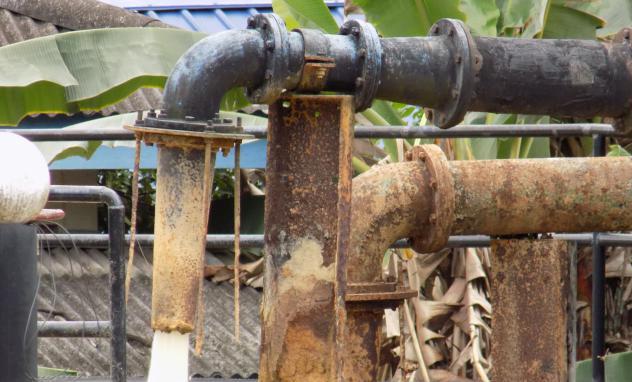
The Japan International Cooperation Agency financed the RM2.48bn project which included the construction of the 35m-high Kelau Dam, a water treatment plant called Langat 2, a pumping station, dual water pipelines, access roads, and a telemetry system. This tunnel and its attendant structures will supply raw water from the River Semantan, a tributary of the Pahang River, to Selangor, Kuala Lumpur, and Negeri Sembilan. The pipeline’s excavation was completed in 2014 and the Langat 2 water treatment plant is scheduled to be online in October 2017 at the earliest. With the project’s completion near, raw water from the Semantan River has already been transferred to the Langat River, with the first flow of water through the tunnel occurring in August 2015 after the Sungai Langat Dam experienced low capacity.
A scholar might request access to the detailed EIAs prepared for this project, analyze their impact on the final plan for the project, and examine the stakeholder engagement conducted in their preparation. Furthermore, interviews could be conducted with NGOs, communities, and institutions who supported and opposed the construction and continuation of this project to determine the perceived effectiveness of the stakeholder engagement process. An analysis of Malaysia’s water resource availability may be completed and could include an evaluation of the potential provision of water to Kuala Lumpur, Selangor, and Negeri Sembilan by the tunnel compared to the effectiveness of alternative methods of freshwater provision.
Understanding the impact of national water policy on local water availability, particularly as it relates to the transfer of water from one region to another, can help the Malaysian government better understand the contrasting needs and concerns between local water management policy and national water management policy. Furthermore, research to determine the availability and efficacy of alternative water management and provision strategies can assist KeTTHA in determining their national policy on regional and national freshwater provision and interstate transfers. A study of the impacts of international funding on the EIA and stakeholder engagement processes can help KeTTHA and other government ministries determine whether domestic EIA processes meet international standards.
• MalaysianMinistryof Energy,GreenTechnologyandWater(KeTTHA). KeTTHA was the government ministry responsible for the contract solicitation and approval for the Pahang-Selangor Raw Water Transfer Tunnel Project..
• CameronHighlandsMunicipalCouncil. The Cameron Highlands Municipal Council expressed concerns over the quality of their water supply and the consequences of agriculture, extractive industries, and large-scale projects on their ability to supply clean water to its residents.
• RaubMunicipalCouncil. The Raub Municipal Council noted concerns with the potential effects the Pahang-Selangor Raw Water Transfer Tunnel Project will have on their district’s ability to provide water to its inhabitants.
• World Wildlife Foundation Malaysia . The WWF Malaysia conducted an in-depth analysis of the original EIA for the PahangSelangor Raw Water Transfer Tunnel Project and may have additional information on the project as it has progressed.

• Economic Section of the Embassy of Japan in Malaysia. This office maintained a copy of the updated EIA on the PahangSelangor Raw Water Transfer Tunnel Project, which was available for public viewing over the course of six months. The Economic Section may also have additional information on the project including contract proposals and project evaluations.
• NGOs in Opposition to the Project: Centre for Orang Asli Concerns (COAC), Consumers Association of Penang (CAP), Sahabat Alam Malaysia (SAM), Save Our Sungei Selangor (SOS Selangor), and Treat Every Environment Special (TrEES).
• Furuoka, Fumitaka. “Japanese aid to the pahang-selangor water transfer project in Malaysia: Aid guidelines and decisionmaking.” New Zealand Journal of Asian Studies 13, no. 1 (2011): 31-45.
• Menon, Priya. “Water from Pahang by year end.” The Star Online, May 27, 2014. Accessed February 1, 2017. http://www. thestar.com.my/news/community/2014/05/27/water-from-pahang-by-year-end-federal-government-initiative-to-bring-reliefto-klang-valley-folk/.
• Tan, K. W., and Mazlin Mokhtar. “An appropriate institutional framework towards integrated water resources management in Pahang River basin, Malaysia.” European Journal of Scientific Research 27, no. 4 (2009): 536-547.
• WWF Malaysia. “Comments by WWF Malaysia on the Detailed EIA for the Proposed Water Transfer from Pahang to Selangor by Jabatan Kerja Raya.” 2000. http://repository.wwf.org.my/technical_reports/C/ CommentsbyWWFMalaysiaonTheDetailedEIAForTheProposedRawWaterTra.pdf.
In order to determine the effectiveness of stakeholder engagement processes for interstate water transfers and understand the impacts of international funding on Malaysia’s Environmental Impact Assessment (EIA) process for mega-projects, KeTTHA and other Malaysian government ministries shouldexplorehowtheirinternalEIAmeasurescomparetothoserequiredbyexternalfundingsources such as the World Bank and Asian Development Bank. Do Malaysia’s processes for assessing the environmental and social impact of mega-projects meet international standards? How can Malaysia improve their methods of conducting stakeholder engagement for interstate water transfer programs and other mega-projects? What best practices from completed internationally funded mega-projects canbeadaptedintoMalaysianEIAmethodologies?
KeTTHA will continue to conduct interstate water transfers throughout Malaysia, especially as climate change impacts freshwater availability and seasonal rainfall. The Pahang-Selangor Raw Water Transfer Tunnel Project is but one internationally funded infrastructure mega-project meant to ensure energy and water security among Malaysian states. Given future concerns about freshwater quality and availability, KeTTHA will continue to explore and conduct massive water infrastructure projects that have the potential to negatively and positively affect millions. A study of the impacts of international funding on the EIA and stakeholder engagement processes can help KeTTHA and other government ministries determine whether domestic EIA processes meet international standards. An additional goal of such a study is to help make the Malaysian EIA process more inclusive of indigenous and local community concerns and to ensure that rural communities are given equal consideration by the government compared to major metropolitan areas such as Kuala Lumpur?
Penang state, one of the most urbanized and economically developed states in the country, is divided between Penang Island and Sebarang Perai (the mainland), with each governed by its own municipal council. The state is ethnically and racially diverse, with 41.7% ethnic Chinese, 41.3% Malay, and 9.8% Indian Malaysian. The state’s economy is heavily based on semiconductor and electronics manufacturing, while fishing has also historically been an important activity, leading some to refer to Penang as a “fish and [computer] chips” capital. However, some Penangites have raised concerns about recent declines in those two sectors. Tourism is a more recent industry, driven in part by George Town’s UNESCO World Heritage Site designation in 2008.
Since 2008, Penang’s state government and local municipal councils have been controlled by the Democratic Action Party (DAP), a center-left political party. The political and ethnic differences between Penang, its surrounding states, and the national government, as well as Penang’s strong civil society, present a unique environment for the implementation of public policy innovations. Some of the most relevant ongoing policy issues in the state include the development and implementation of a new transportation master plan to be funded by coastal land reclamation development, water security, and housing affordability.
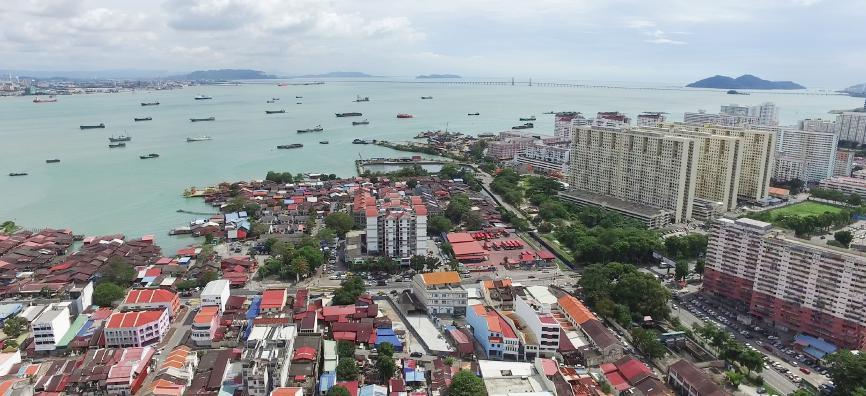
The Penang Water Supply Corporation (PBAPP), the water operator for Penang state, has the lowest domestic water tariff and non revenue water (NRW) (19.9%) in the country. Penang is also the only state in Malaysia not to ration its water use, as ensuring uninterrupted water supply is considered particularly important for the success of the state’s electronic manufacturing sector. Despite achievements in water provision, Penang faces several challenges around water security. First, it is extremely dependent on Kedah, as 84% of its raw water comes from the Sungai Muda. The two states’ water demand is expected to exceed the supply from the Sungai Muda by 2020. Second, there are concerns that logging near the Ulu Muda water catchment will degrade water quality in the Sungai Muda. Three reservoirs near Ulu Muda are of particular importance for the country’s food security, as Kedah supplies half of the nation’s rice. The federal government has so far refused requests from both Penang and Kedah to provide Kedah with monetary compensation to reduce or stop logging. Lastly, concerns are growing due to the uncertainty of rainfall, especially following a drought in 2016. PBAPP is pursuing both supply- and demand-side approaches in response to these challenges. At the time of writing this agenda, PBAPP was in the middle of negotiations (mediated by the Ministry of Water, Green Technology and Energy) to secure water transfers from Perak state. However, it is unclear whether or not Penang’s future water security can be ensured in the absence of coordination with its two neighbors.
A scholar could start by meeting with Dato’ Ir. Jaseni, the CEO of the PBAPP, to understand the factors enabling and limiting demand- and supply-side interventions. A scholar could take a systems approach to modeling, incorporating the food-water-energy nexus, to outline the competing water demands in the region. An additional or alternative research approach could model prices and supply changes and their impacts on water security.
Water security and interstate water transfers are relevant topics for several states in Malaysia, especially in the context of shifting demands and climate change. As a result, this research would provide a valuable case study for other states and Malaysia as a whole.

• Dato’ Ir. Jaseni Maidinsa, CEO of PBAPP. Can provide information on PBAPP’s initiatives.
• Ministry of Water, Green Technology and Energy. Federal ministry mediating negotiations between Penang and its neighboring states.
• Could provide information about the extent of logging in Kedah, especially in the Ulu Muda Forest.
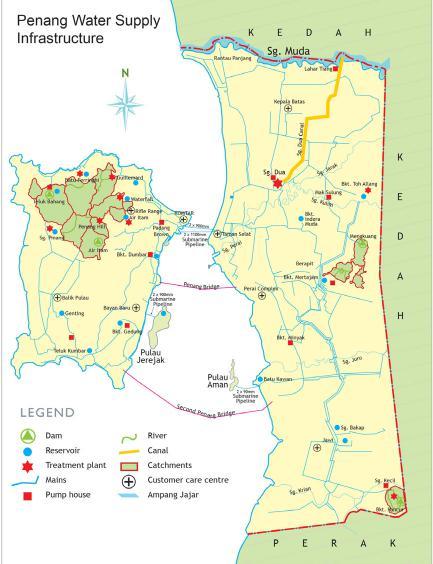
• PBAPP documents in MSCP Research Library
Several states in Malaysia engage in transboundary water transfers. For example, Kedah transfers water to Penang, Johor Bahru transfers water to Malacca and Singapore, and Pahang transfers water to Selangor. Such transfers require coordination across jurisdictions. A policy memorandum could be developed analyzing the mechanics of effective transboundary relationships in advancing water security and the roles of federal agencies, especially the Ministry of Water, Green Technology and Energy, in fostering those relationships. Further analysis could be conducted on the interactions between water, food, and energy security in transboundary relationships and the implications for broader economic initiatives, such as the Northern Economic Corridor.
What are the preconditions for managing fisheries in the areas of the proposed southern land reclamation?
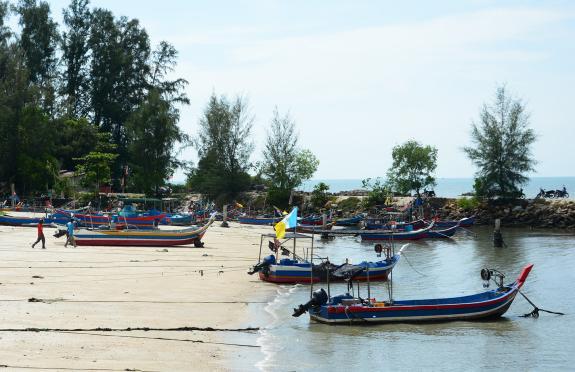
Fishing communities exist on both the northern and southern coasts of Penang, areas with existing and proposed land reclamation projects, respectively. Many fishermen in Penang, especially in the north, conduct nearshore, small scale fishing with nets. Shrimp and crab are two of the more common catches. Fishermen from other countries, including Thailand, also fish near Penang. In addition, Penang has a burgeoning aquaculture industry.
Anecdotal evidence suggests that the Seri Tanjung Pinang (STP) Phase 1 reclamation project has already had an adverse effect on fisheries in the north. The second phase of the project is currently underway near Gurney Drive. The developer for the project compensated licensed fishermen and crew, but unlicensed fishermen were not eligible for compensation, causing some controversy. The Penang Transportation Master Plan currently includes proposals for coastal land reclamation around the south of the island in order to fund the plan. The Southern Reclamation Scheme (SRS) consortium has held informational meetings with fishermen, including discussions about compensation in the form of both direct payment and construction of a new fishing jetty. The reaction to proposed reclamation to the south has been mixed, both within and across
different fishing communities. A recent protest against the reclamation included fishermen from both the northern and southern coastal communities.
Interview fishermen and environmental advocates to understand their range of views on previous and proposed land reclamation projects. Gather data from government agencies and the fishermen to conduct a valuation and analyze potential impacts. Develop an economic or social analysis of fisheries in the areas of existing and/or proposed land reclamation projects.
Coastal land reclamation raises questions about previous impacts to, current conditions of, and future implications for fisheries in Penang. Several environmentalists argued that an economic analysis would help inform a more accurate Cost-Benefit Analysis of the proposed reclamation in the south. In addition, villagers in the south indicated that fishermen from the mainland could also be affected. Therefore, this analysis would help explore appropriate boundaries of a cost-benefit analysis. This research would also have broader implications for coastal land reclamation projects throughout Malaysia and the region.
• Andrew Hann. Independent filmmaker who has interviewed and researched fishing communities. Andrew can connect interested scholars with fishing communities, who may be able to provide raw data (e.g. receipts and logs from fishermens’ catches).
• MattBenson,ProgramDirector,ThinkCity. Knowledgable about the land reclamation in the north.
• Dato’Dr.LeongYuehKwong,PenangGreenCouncil.Can provide environmental and historical perspective on land reclamation and fisheries.
• KandaKumar,MalaysianNatureSociety. Local environmental advocate can provide insight on the impact of land reclamation on mangroves and fisheries.
• Departmentof FisheriesMalaysia(especiallytheFisheriesResearchInstitute. Data on fisheries.
• WorldFish Center. An organization that works on food security and fisheries in Southeast Asia. Although the organization does not conduct work in Penang, it is based in Penang and has contacts with relevant stakeholders in the region.
• Dr.KamSuanPheng. Local scientist who has done research on fisheries and was recommended by the WorldFish Center as a potential contact.
• Universityof ScienceMalaysia. Has conducted research on fisheries and suggested by the WorldFish Center.

• Sa, Teh Tiong. 2012. Malaysia - Penang (land reclamation chapter on Penang, courtesy of Dato’ Dr. Leong Yueh Kwong and available in MSCP Research Library)
• Fishery Information and Cost-Benefit Analysis approaches from the Food and Agriculture Organization of the United Nations
How have non-traditional financing mechanisms such as land reclamation been used in the provision of transportation infrastructure in Penang?
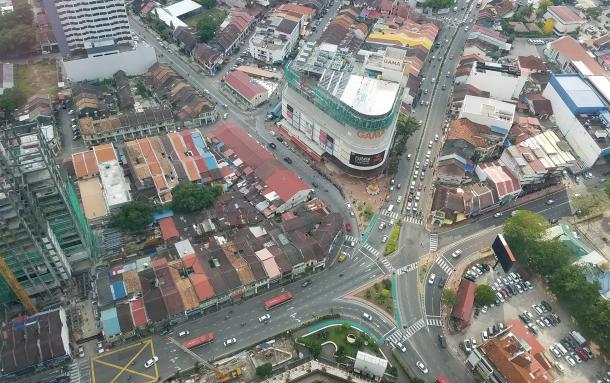
Across Malaysia, state governments are faced with the need to raise funds for public works projects in a legislative environment where the federal government has increasing jurisdiction over most revenue tools. For example, from 1990 to 2010, federal revenues grew from 79 percent to 91 percent of all government revenues (Wee 2011), forcing state governments to be more creative in finding ways to raise money. This is especially important for states such as Penang, which are led by the opposition party.
While transportation planning generally falls under federal jurisdiction, the Penang state government has taken initiative to adopt a novel means of independently raising funds to support the RM46 billion Transport Master Plan. The South Reclamation Scheme (SRS) Consortium, comprised of an infrastructure company and two local real estate developers, has proposed a strategy in which reclaimed land to the south of the island will be sold to pay for a series of highways and transit lines. The sale of 5,195 acres of reclaimed land, serving as a future land bank, ostensibly provides a “fully self-funded” means to implement the Master Plan, while providing housing for an estimated 300,000 people.
Begin with a review of traditional mechanisms for both the funding and financing of large infrastructure projects. Examine case studies of how increases in land values are captured through tools such as tax-increment financing (TIF) in other contexts. Then focus on Penang itself to draw on market analysis of expected return on land sales given the current real estate dynamics in Penang state, and the prospect of market saturation. Interview government, private sector, and NGO stakeholders to reveal any barriers to plan feasibility.
Using privately-driven land reclamation as a means of funding infrastructure without requiring public expenditures is an innovative yet untested scheme. Research into its feasibility would provide invaluable lessons learned for applications in broader contexts.
• Cha-LyKoh,PropertyPriceTag.com. Aggregates real estate transaction data. May be helpful in understanding land and housing market dynamics underpinning the reclamation scheme.
• YB Chow Kon Yeow. He is the Penang State Executive Councillor in charge of PTMP, and has led its development. His special officer, Ms. Vishantini, works closely on the PTMP.
• Lim Thean Heng, former state government chief traffic engineer. Since leaving government, he has worked as an activist on sustainable transportation planning in Penang. He is also the moderator of the Penang Transportation What’s App group.
• SRS Consortium: Alternative Penang Transport Master Plan Executive Summary. MSCP Research Library.
• Wee, Chong Hui (2011) Federal-State Relations: the Case of Natural Resource Management, Malaysia. Policies and Issues in Economic Development. Kuala Lumpur: Institute of Strategic and International Studies
The Penang case study of using land reclamation to fund infrastructure is a model that, if successful, could be replicated in other contexts. A policy memorandum can be developed that evaluates the potential feasibility of using private land sale through reclamation as a means to raise capital for public infrastructure projects, and contrasts it to other conventional sources of funding. This memorandum would consider the economic value and associated market risks of such projects, and offer policy recommendations to other jurisdictions considering alternative financing mechanisms. Furthermore, such a policy memorandum may also consider other economic, environmental and social impacts of large scale coastal reclamation projects, and can be developed in tandem with research on question PE2.

What
will future plans affect non-automobile accessibility?
Private vehicle ownership continues to rise in Penang, as few viable transportation alternatives to the car currently exist and the automobile cements itself as a symbol of wealth. With Penang now having more cars than people (Shariff, 2012), the associated traffic congestion is choking economic growth and threatening the safety and quality of life of Penangites. The Penang Transport Master Plan (PTMP) calls for a series of supply and demand-side interventions to combat worsening traffic congestion and inadequate regional accessibility.
Established transportation research suggests that, contrary to the stated goals of the PTMP, building new highways and widening existing corridors will likely encourage more autooriented development and exacerbate congestion. Existing federal policies, such as providing government subsidies of Proton vehicles, increase private vehicle ownership and further complicate the strategy to reduce automobile dependence.The PTMP, which was published before ridesharing companies began operating in Penang, does not address their impact. Additionally, bicycling infrastructure is haphazardly placed and often conflicts with pedestrian rights of way.
A scholar can look at aggregate travel demand data including modal splits over time, motorization rates (cars per household), and estimates of regional vehicle-kilometres traveled (VKT). Gauge public opinion for transportation interventions through surveys, such as onboard transit vehicles or at bike share stations. Document the parking policies of each municipality including pricing, availability, and enforcement through observation and interviews. Use publicly available transit service data from RapidPenang to document quality of service. Interview users of the bike share program and map out current bike lanes within the heritage area and buffer zone.
Rapidly increasing rates of motorization, while reflective of growing wealth, present various negative externalities faced by cities throughout the developing world, including traffic congestion, pollution, and sprawl. Research into demand-side measures to influence travel behavior towards transit and active modes would have wide-ranging applications throughout Malaysia and beyond.
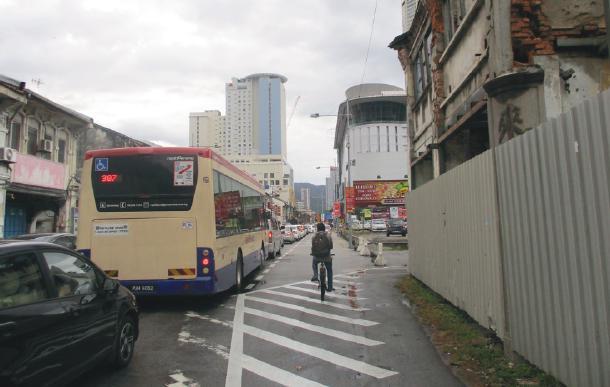
• RapidPenang. Operated by the federal government, this is the local transit authority which runs local bus service and has data on service attributes and ridership.
• Suruhanjaya Pengangkutan Awam Darat (SPAD). SPAD is responsible for planning, regulating and enforcing all matters related to public transport in Peninsular Malaysia.
• Alex Koenig, transportation engineering consultant who has worked in Penang for the past 30 years. May be based in Germany but will have helpful contacts.
• Penang Transport Master Plan.

• Alternative Penang Transport Master Plan proposed by Penang Forum
• Shariff, Noresah Mohd. “Private vehicle ownership and transportation planning in Malaysia.” In International Conference on Traffic and Transportation Engineering. 2012.
• Lim, Anthony. “Budget 2017: Government Encouraging BR1M recipients to become Uber and Grab drivers – RM4k Rebate for Iriz.” Paultan News. October 21, 2016.
• Transportation WhatsApp Group.
What are the overall trends driving the housing affordability gap in Penang Island and what dynamics are unique to George Town
According to the Penang Institute, from 2003 to 2013, average house prices in Penang Island doubled from 2003 to 2013, with more than half of this increase happening after 2011. While household income increased by 5.4% annually over this period, the concurrent rise in average housing price by 8.6% per year over the same period suggests a growing “affordability gap.” In response, the Penang state government introduced a range of housing policy interventions in 2014 intended to protect existing and emerging affordable housing stock, curb speculation, and help low income households into ownership. One of these policies was the establishment of a RM500 million Affordable Housing Fund to build 20,000 units of public and affordable housing in all five districts of Penang, the largest amount set aside by any state government in Malaysia for affordable housing. The majority of these units will be delivered by the Penang Development Corporation and will likely affect the supply and demand dynamics in Penang Island.
Meanwhile, George Town has seen a decline in number of businesses and residents and an increase in vacancies in recent years. According to Think City’s George Town World Heritage Site Population and Land Use Change (2009-2013) report, “around 590 households left the World Heritage Site over the four year period. Those who moved out were generally young families, females, older residents, [and] renters.” Additionally, there has been an economic structural shift, with an increase in hospitality, tourism and creative industries

and a decline in household and business services, especially transport, logistics, building renovation and furnishings. Think City’s report indicates that as rental and property prices have increased, housing affordability has declined in tandem with these trends during George Town’s urban regeneration process. As the state government has implemented new housing policies to address the housing affordability gap throughout Penang, these policies have yet to affect the market dynamics in George Town’s older building stock.
The research can be further guided in consultation with Think City and Penang Institute. We envision this research to be done at two different scales: i) Penang Island, to provide general context, ii) George Town. For example, Think City’s George Town World Heritage Site Population and Land Use Change (2009-2013) report includes maps and spatial data that provides information on demographic and land use changes at the scale of the block. Thus, data collection, such as surveys with residents and businesses, can be based on specific areas that have undergone demographic change to reflect how factors affecting affordability can also vary on a case by case basis while suggesting general trends.
This research would help evaluate the extent to which the case of George Town is a sustainable urban regeneration model, especially in terms of providing affordable options to residents and businesses. The wider implication of this research question would provide an assessment of the extent to which there is a growing affordability gap in the housing market. While housing prices seem to have increased with household incomes on average countrywide according to a study by Khazanah Research Institute, these dynamics can be different in local contexts.
• Matt Benson, Project Director, Think City. A subsidiary of Khazanah Nasional, Think City has been instrumental in the regeneration of George Town. They have spatial data available for the George Town World Heritage Site area.
• Evelyn Teh Lay Hoon, Penang Institute: State sponsored public policy think tank that has conducted research on housing affordability.
• LocalCouncilwomanSalmaKhoo,MBPP: President of Penang Heritage Trust. She is extremely knowledgeable about George Town’s history and transformation.
• Cha-Ly Koh, PropertyPriceTag.com. Company aggregates real estate transaction data. May be helpful in understanding housing affordability in Penang and George Town.
• PenangDevelopmentCorporation. engaged in the planning, development, and management of land, the company manages the sale and rental of residential and commercial units.
• Think City, George Town World Heritage Site Population and Land Use Change (2009-2013).
• Penang Monthly online articles on affordable housing, including Stuart MacDonald, “New housing policies to help Penangites cope,” Penang Monthly (2014).
• Kazanah Research Institute, “Making Housing Affordable: MIER National Economic Outlook Conference” (25 November 2015)
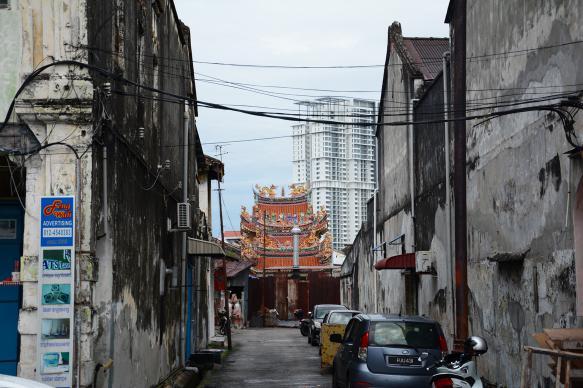
Sarawak is one of two Malaysian states located on the island of Borneo in East Malaysia. It is bordered by the Malaysian state of Sabah and the nation-state of Brunei in the northeast and the Indonesian region of Kalimantan to the south. As of 2015, Sarawak’s population was 2.6 million people, spanning over 40 sub-ethnic groups. Over 50% of the population is made up of indigenous groups including Iban, Bidayuh, Melanau, and Orang Ulu. Kuching, the capital city, has a population of 600,000.
The state’s separation from peninsular Malaysia and distinct political history produce a unique legal context for natural resource management. This includes the possession of non-titled, customary land rights by indigenous groups as well as restrictions on nonnative land ownership and use rights. Because of Borneo’s resource richness in timber, petroleum, and cultivable land, customary subsistence strategies of indigenous groups and legal prerogatives often conflict with extractive activities. Resource extraction is the largest economic sector in East Malaysia and is a major source of federal fiscal receipts.
As a center of tourism, extractive industry, and material export, Kuching’s economic growth and urbanization is linked to ecological and environmental change throughout the region. Thus, the process of sustainable urbanization in Sarawak raises questions about the interactions between national and state development, and between extractive industries (such as oil palm, timber, and mining) and land rights.
Does large scale renewable energy infrastructure attract industrial development as expected (by federal planning authorities) and provide sufficient economic benefits to its host communities (or intended recipients)?

The Government of Malaysia has placed energy at the center of its economic and industrial growth and development strategy for the state, promoting inexpensive hydropower to entice a variety of new industries. Development authorities describe a process of building out infrastructure (highways, hydro-dams, etc.) in an effort to attract streams of investment or attract a specific type of industry. The goal of the mega dams in Sarawak, for instance, is to attract prioritized “trigger industries”—those based on oil, aluminum, and other metals, glass and steel. The state is concerned about its inability to “survive on oil palm and tourism alone” and is looking to push service-sector economic growth, moving away from an extraction-based economy which only offers upstream employment on plantations, to one offering more high tech, high income, and high paying jobs.
The scholar would: (1) Analyze a site where a similar central strategy of attracting industry to undeveloped areas through energy infrastructure was employed (reference World Commision on Dams, consider cases such as Inga in Congo or Jinsha River in China) (2) Look specifically at demand analysis matching actual need and use, success and efficacy in economic returns to the host community/ region. The scholar could analyze projected versus actual used data on energy demand, ‘before’ and ‘after’ indicators for financial health (salaries, job availability, the amount of industry that moved in) around the selected site, as well as environmental and community changes; (2) Using SCORE as a case study, model potential for alternative renewable energy mix to meet projected needs, and look at projected figures for aforementioned factors.
The SCORE Renewable Energy Corridor in Sarawak provides a relevant case study for this policy question, as it intends to stimulate global and domestic investment in rural areas across the country via large-scale renewable energy infrastructure. Between six and twelve dams are scheduled to be completed in Sarawak by 2020 as part of SCORE. While the government sees SCORE as an opportunity to create jobs , the plan looks to shift away from traditional Malay and smallholder industries—i.e. oil palm, fishing, livestock, agriculture— towards incentivizing foreign companies to establish industry hubs in Borneo. It is unclear how that policy provides opportunities and leverage for the average Sarawakian, especially as foreign companies have a record of hiring migrant labor and those that speak the parent-company language. Given the environmental destruction and human displacement that tends to accompany massive hydro projects, such as those proposed by Sarawak’s SCORE corridor, it is worth examining past patterns which have emerged from this strategy, as well as the viability of alternative renewable energy systems (e.g., solar-wind-biomass).
• State Planning Unit: The state planning unit in Sarawak is responsible for the development and implementation of SCORE renewable energy corridor, which would serve as an excellent case study for this energy-cum-industry pattern.
Contact: Julin b Alen (Urban Development and Tourism)
• Ministryof Energy,GreenTechnologyandWater: The efficacy of this development strategy has far reaching consequences for Malaysia, especially if there is a more affordable (mostly in terms of environmental and social cost) renewable energy mix option that should be considered in place of large hydro.
• PSE AG Consultants: Solar, hybrid systems analysts. Contact: Firdaus Manan, Konsortium Shorefield-GCE Sdn Bhd
• SCORE 2008 – 2030 development plan for Sarawak focuses on developing the energy sector and targets ten high impact priority industries that will complement the development plan and provide downstream opportunities for SMEs http://www.recoda.com.my/invest-in-score/what-is-score/
• Sovacool, B. K. & Bulan, L. “Meeting Targets, Missing People: The Energy Security Implications of the Sarawak Corridor of Renewable Energy (SCORE).” Contemporary Southeast Asia: A Journal of International and Strategic Affairs, vol. 33 no. 1, 2011, pp. 56-82. Project MUSE, muse.jhu.edu/article/436963.
• Ansar, A., et al., “Should we build more large dams? The actual costs of hydropower megaproject development.” Energy Policy (2014).
• Oxford Business Group. The Report, Sarawak 2013. Print - MSCP Library
The strategy seen in Sarawak (‘SCORE’) of developing large dams for cheap energy as a business attraction and growth incentive is a model that has been employed in other contexts with mixed measures of success. A policy memorandum could offer recommendations for a viable renewable energy mix as a means of achieving the same goals of business attraction, comment on broader strategy of forecasting cheap energy to economic boon, and offer case studies on areas where this strategy has/ has not seen a successful lifecycle in other contexts.
How does rural–urban migration affect the legal rights and social vulnerability of indigenous groups?
Indigenous peoples of Sarawak, often referred to as Dayaks, constitute an estimated 50% of the state’s total population. Dayak groups have historically lived in interior areas of Borneo, with different societies relying on foraging, shifting cultivation, sedentary subsistence farming, and commercial crop production. Recognizing these varied production strategies, Sarawak’s Land Code of 1958 offers Dayak groups land tenure protection through Native Customary Land Rights. However, Malaysia’s economic dependency on large-scale, landconsumptive economic activities has dramatically decreased land available for customary uses. According to scholars and indigenous rights groups, encroachment on native customary land and lack of economic opportunities in rural villages are two factors for Dayak migration to urban centers, such as Kuching and Peninsular Malaysian cities.
As Dayak migrants seek economic security in urban areas, many find dangerous and/or low-paying employment in the construction and service sectors. Migrant Dayaks are frequently paid informally, earning salaries below the minimum wage and receiving no access to the social security benefits that Malaysian law mandates. Furthermore, urban land tenure remains an uncertainty for many Dayak migrants, who often settle in precarious squatter settlements and may be forced to resettle due to urban development pressures. One example of this resettlement trend is found in Batu Kawa, an informal Dayak community at the edge of Kuching whose residents lost their native rural land only to become internally displaced within the city due to development pressures. Although the Eleventh Malaysia Plan (2016–2020) focuses on inclusiveness and enhancement of bumiputera’s economic livelihoods, and Dayaks are protected by native customary rights, it remains to be seen whether and how the rights of Dayak urban migrants are being upheld.

This research would take the form of a case study of rural-to-urban Dayak migration. Through interviews with Batu Kawa families and mapping exercises, the scholar could broaden understanding of Dayak migration patterns in the region as well as the economic opportunities they have found in the city. The scholar should identify one or two more Dayak migrant communities in Kuching to develop a comparative study. A second phase of the research would develop a place-specific social vulnerability index, such as the Eviction Impact Assessment tool or Cutter’s Social Vulnerability Framework, which can be administered to Batu Kawa residents and other identified migrant settlements in Kuching to assess how rural-to-urban migration has affected migrant’s vulnerability.
With diminishing economic opportunities in rural areas, and increased agricultural encroachment on native land, indigenous societies in Malaysia will inevitably continue to move to urban areas. Failure to identify vulnerabilities faced by indigenous groups in urban areas and possible policy solutions will lead to increased marginality for future generations. The problem facing indigenous communities is not unique to Malaysia, and findings from this research can serve policymakers and scholars from other regions that are facing similar circumstances.
• SarawakDayakandIbanAssociation(SADIA): SADIA is an NGO that focuses on land rights and displacement of indigenous communities in Sarawak. We have met with them twice over the years and they’ve confirmed their willingness to support us for this research. Contact: Nicholas Mujah
• DayakBidayuhNationalAssociation(DBNA): DBNA is a government agency tasked with the social and economic development of Dayak communities. They could provide the researcher with Dayak organization contacts and historical background.
• TheLastForestPeopleof Sarawak: This is an NGO committed to the documentation of shifting migration patterns of Dayaks. The researcher could benefit from their extensive data collection and contacts to other organizations. Contact: Andrew Garton

• Barney, Keith. “Uprooting Communities and Reconfiguring Rural Landscapes: Industrial Tree Plantation and Displacement in Sarawak, Malaysia, and Eastern Thailand.” In Development’s Displacements: Ecologies, Economies, and Cultures at Risk, edited by Peter Vandergeest, Pablo Idahosa, and Pablo S. Bose. Vancouver: UCB Press, 2007.
• Colchester et al. Land is Life: Land Rights and Oil Palm Development in Sarawak, Indonesia: FPP and SW, 2007.
• Cutter, S. L., Boruff, B. J. and Shirley, W. L. “Social Vulnerability to Environmental Hazards.” Social Science Quarterly, 84: 242–261. 2002.
• Eviction Impact Assessment Tool. Housing International Coalition. 2017. Web. http://www.hic-net.org/spage.php?id=p2s=#.
WJN-rvkrKuU
• Government of Sarawak. “Land Code: Chapter 81,” Laws of Sarawak, 1958.
• Sim, Hew Cheng. Village Mothers, City Daughters: Women and Urbanization in Sarawak, Singapore: ISEAS, 2007.
Cultural tourism caters to tourists who seek to experience a foreign lifestyle first-hand, often through art, performance, and architecture of traditional dwellings. With increased global traveling, cultural tourism is often identified as the way for indigenous communities to preserve their culture while succeeding economically. However, connecting global urban tourists to indigenous communities can pose several questions regarding sustainability and ethics. Firstly, cultural consumption can be temporal; it relies on the consumer’s perception of what is authentic (MacCannell, “Staged Authenticity”, 1973). Secondly, the extent to which communities can set up on their own operations without external influences (NGOs, corporations, etc.) brings into question what interests might these groups have whether it might be PR, goodwill, or access to resources. Lastly, how the motivations of NGOs, corporations, or other stakeholders engaged in cultural-tourism create long-term benefits for the communities they are working with.
The approach for this project would be multi-site and comparative in nature. A scholar could begin by compiling a list of cultural tourism sites and selecting sites representative of the breadth of models. Groupings could be formed around revenue model, ownership structures, types of operational activities, along with available impact metrics such as revenue, net profit, number of tourists visiting, and life cycle of such places. These groupings then could be placed into spectra (not limited to two) around ownership and the flow of goods (whether tourists are going to the village, or vice versa). A second method could describe the life cycle of cultural-tourism to investigate sustainability through interviews.
How much control do villagers have with consumers?
Is control given more to external forces such as NGOs, corporations, government, etc?
What are the incentives for external stakeholders to be involved in the process (PR, access to resources, good will, etc.)?
What percentage of profits do different stakeholders take?
Which intermediaries (NGOs, corporations, etc.) are involved in the process?
How is profitability affected when villagers leave to get to consumers (and viceversa)?
What are co-operative models for the village? Who votes on what decisions are made?
Do consumers travel to the village for consumption (homestay, safari, etc.)?
Do villagers leave the village for performances or displays at an urban center?
With dwindling legal land rights protection in the face of industry interests, indigenous communities in Malaysia must seek alternative means to protect traditional ways of life. One emerging method of balancing community preservation with development has been hosting foreigners who seek to experience local culture (‘cultural tourism’). This research question aims to demonstrate the efficacy of cultural-tourism models
in community sustenance by measuring financial returns and qualitative feedback from selected communities. For instance, if an eco-tourist site is controlled by external actors, perhaps there is higher immediate return on investment, but the returns over time are less. Or alternatively, a more communally owned model has slower returns, but exhibits greater community agency and sustainability. In some cases, the tourist’s desire to see culture can influence the villagers’ behaviors by encouraging them to perform more. A feedback loop may emerge, with increasing disingenuous behavior from both sides. With further discovery of the place, consumers may cease to find the place as novel, and villagers may adopt behaviors based on what tourists may want to see. An analysis of these dynamics may inform alternative models for ecotourism to maximize social impact.
• Ministryof Tourism: Faciliates the development of sustainable tourism throughout Borneo. Contact: Gracie Gekkie, ex-CEO at the Ministry of Tourism.
• WorldWildlifeFund: Promotes wildlife awareness, conservation, and assistance of policy interventions to support sustainable tourism for indigenous communities, prevent damage from resource extraction. Contact: Cynthia Chan, Senior Program Officer
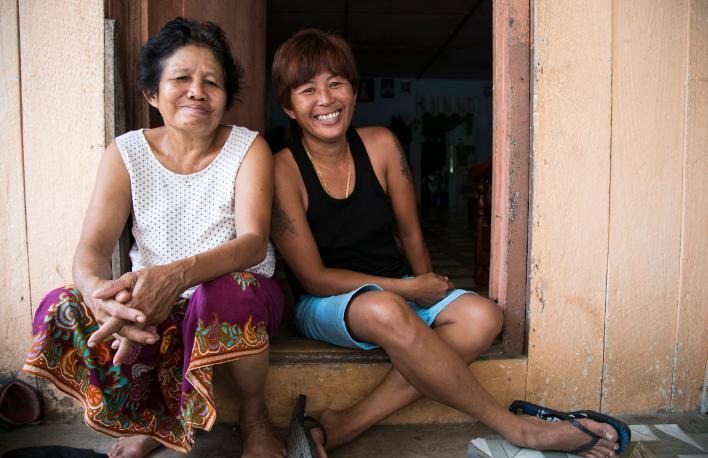
• UNIMAS,SocialSciencesDepartment: Assists with the development of ecotourism in Mount Singhai and also Jagoi Heritage Site. Dr. Gabe is not in the Social Sciences Department but will have many relevant contacts. Contact: Dr. Gabe Tongka ek Noweg
To what extent does the infrastructure put in place to support the development of extractive industries facilitate subsequent commercial development?
As a resource-rich region, extraction-driven activities have historically driven Sarawak’s community development. For instance, the settlements around Sarawak - Kuching, Miri, Buntulu, and Sibu - all developed around resource extraction. Present-day development, such as the new AH-150 highway, follows the path of timber concessions. It remains unclear how communities in the wake of this development have the right to participate in adjunct development activities.
This research could integrate spatial analysis to identify places of change, followed by community surveys. One could begin by looking at maps, datasets, and satellite imagery emphasizing changes to roads, infrastructure networks, and forest cover over time (SEDAC’s
“Global Roadless Areas” dataset). Areas that might be susceptible to significant alterations could be identified by looking at deforestation data (Hansen, 2013) to assess land use and forest cover changes. Using the Google Earth Engine Timelapse feature, a scholar could analyze road expansion plans since 1985 and identify urban growth patterns. A list of existing developers and sites can be found on the Sarawak government site. Then, the scholar’s identified sites could be ground-truthed with surveys to understand communities’ relationships with such changes and the responsible industries.
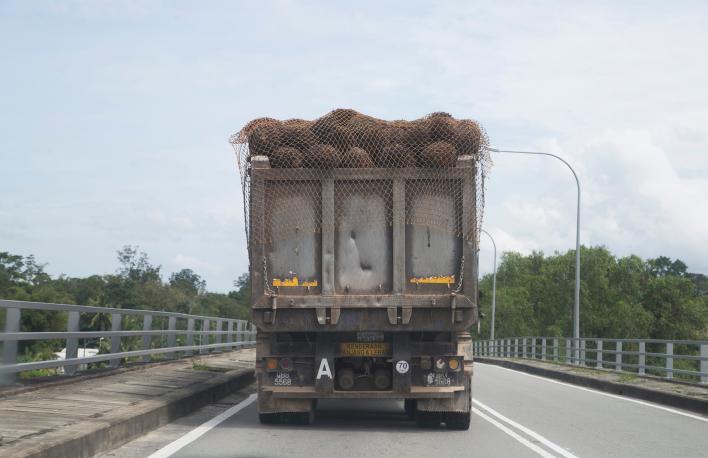
The proposed research seeks to describe current trends and develop a path forward for communities to be engaged in simultaneous development. The research seeks to outline the process of engagement, profit margins, and contracts between developer and community. It also seeks to investigate the nature of conversations for communities to negotiate and appeal to investment entities. Such analysis can provide context for communities to understand and shape their roles in relation to extractive activities and associated changes.
• WorldWildlifeFund: Promotes wildlife awareness, conservation, and assistance of policy interventions to support sustainable tourism for indigenous communities, prevent damage from resource extraction. Contact: Cynthia Chan, Senior Program Officer
• UNIMAS,SocialSciencesDepartment: Assists with the development of ecotourism in Mount Singhai and also Jagoi Heritage Site. Dr. Gabe is not in the Social Sciences Department but will have many relevant contacts. Contact: Dr. Gabe Tongka ek Noweg
How have commercial and industrial uses of the Sungai Sarawak evolved over time, and which uses have been encouraged or discouraged by state officials and riverfront development schemes?

One of the best object lessons in how ecosystems adapt to economic and political pressures is the urban riverfront. Since the early 20th century, river redevelopment has been a catalyst for post-industrial revitalization. As urban riverfronts have become less central to commerce, the industrial rivers of Paris, London, and New York were remade to serve aesthetic functions and real estate interests. Several decades later, “Asian Tigers” like Seoul, Hong Kong, and Singapore displaced boat traffic so they could enhance waterfront property values (Lee, Song, and Ducruet 2008).
Similar waterfront projects are now underway in Malaysian cities (Yassin, Eves, and McDonagh 2010). In Kuala Lumpur, planners are restoring the Sungai Klang to increase city-center real estate values. In Johor Bahru, the Sungai Segget Rejuvenation Project seeks to relieve the city’s choked pedestrian passways and drainage systems. In Malacca, planners have redeveloped the riverfront to connect the central tourism district with undeveloped upriver land. Scholars have observed that success of urban river redevelopment in developing cities depends on how well ecological services are maintained (Paul and Meyer 2001; Vollmer et al. 2015) and how well the competing needs of different user groups for water access are met (Gordon 1997; Hoyle 1999). So far, Malaysia’s modern waterfront redevelopment schemes have tended to focus narrowly on aesthetic improvement and real estate value creation.
The redevelopment of the Sungai Sarawak, Kuching’s major river, was launched almost two decades before the other similar schemes in Malaysia. It has, however, taken a considerably different tack. Although a new esplanade has increased land values and spurred hotel and office development, redevelopment of the Sungai Sarawak has left historic shophouses, kampung settlements, and cottage industries intact. Pedestrian river crossings are still provided by small sampan drivers. While tidal regimes and mudflats have been transformed by the creation of a barrage and retaining walls, estuarial habitats and riparian wildlife upstream and downstream from the central business district have been preserved. The contrasts between these two different approaches to riverfront development merit consideration.
• SarawakEconomicDevelopmentCorporation
• LandCustodyandDevelopmentAuthority (State Government of Sarawak)
• AsiaReseatchInstitute,NationalUniversityof Singapore: Contact: Rita Padawangi, Senior Research Fellow.
• Gordon, David L. A. 1997. “Managing the Changing Political Environment in Urban Waterfront Redevelopment.” Urban Studies 34 (1): 61–83. doi:10.1080/0042098976276.
• Hoyle, Brian. 1999. “Scale and Sustainability: The Role of Community Groups in Canadian Port-City Waterfront Change.” Journal of Transport Geography 7 (1): 65–78. doi:10.1016/S0966-6923(98)00030-1.
• Lee, Sung-Woo, Dong-Wook Song, and César Ducruet. 2008. “A Tale of Asia’s World Ports: The Spatial Evolution in Global Hub Port Cities.” Geoforum, Environmental Economic Geography, 39 (1): 372–85. doi:10.1016/j.geoforum.2007.07.010.
• Paul, Michael J., and Judy L. Meyer. 2001. “Streams in the Urban Landscape.” Annual Review of Ecology and Systematics 32 (1): 333–65. doi:10.1146/annurev.ecolsys.32.081501.114040.
• Vollmer, Derek, Michaela F. Prescott, Rita Padawangi, Christophe Girot, and Adrienne Grêt-Regamey. 2015. “Understanding the Value of Urban Riparian Corridors: Considerations in Planning for Cultural Services along an Indonesian River.” Landscape and Urban Planning 138 (June): 144–54. doi:10.1016/j.landurbplan.2015.02.011.
• Yassin, Azlina Binti Md, Chris Eves, and John McDonagh. 2010. “An Evolution of Waterfront Development in Malaysia.” In Proceedings of the 16th Annual Conference of the Pacific Rim Real Estate Society, Wellington, New Zealand, 24–27. http:// researcharchive.lincoln.ac.nz/handle/10182/3215.
• Sarawak Economic Development Corporation (SEDC). 1990. Kuching Riverfront
• Master Plan. Sarawak, Malaysia.
• Castonguay, Stéphane, and Matthew Dominic Evenden. 2012. Urban Rivers: Remaking Rivers, Cities, and Space in Europe and North America. University of Pittsburgh Press.
As is true of many developing countries seeking to increase economic prosperity, in Malaysia, development objectives are often prioritized to the detriment of stakeholder engagement. In Kuching, for example, it is unclear whether and to what extent communities have been engaged in the development promoted by extractive industries. It is also unclear if international standards have been followed in undertaking consultations with indigenous groups forced to resettle as the result of state-sponsored hydro-dam displacement. Likewise, in Penang, while the state government has initiated a public engagement process, controversy exists over the level of public participation in the development of the Transportation Master Plan and decisions about related environmental impacts. Additionally, in Pahang, the tension between local water shortages and the implementation of federal water transfer project call into question the extent to which local stakeholder needs are being considered. Related issues in Kuala Lumpur include the need for expanded stakeholder engagement in Kampung Bharu and MRT development. Furthermore, in Johor Bahru, many local fishermen argue they have not had adequate say in the development of large-scale real estate projects that could adversely impact their livelihoods.
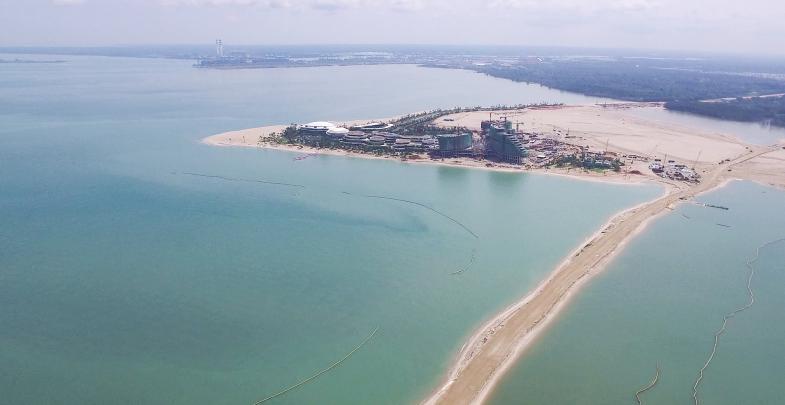
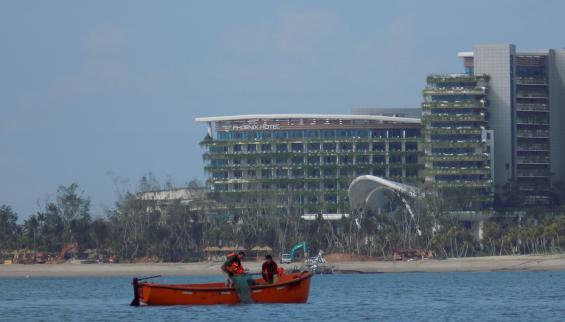
The level of stakeholder engagement in Malaysia differs among projects and regions. In many cities, public engagement has not been the tradition, and government officials are often unfamiliar with the full range of techniques and tools they could use. Visiting Scholars could document how public engagement is currently happening and how these processes might be improved, with the goal of understanding how different cities in Malaysia can learn from each other and how other cities in the developing world can learn from the dynamics in Malaysia. Important questions to consider include:
• When large-scale development and infrastructure projectsareproposed,whichstakeholdersareconsulted andhowdoesthisconsultationtakeplace?
• Howisstakeholderengagementhandledatthefederal and the state level?
• In the absence of required stakeholder engagement, are there examples of civil society organizations taking theleadinengagingthepublic?If so,whattoolsarethey usingtoengagestakeholdersintheplanningprocess?
The division between indicative and prescriptive planning emerges as another cross-cutting theme. While authorities develop some plans as high-level, aspirational documents offering a general vision for long-term development, others prescribe site specific courses of action. In addition, there are instances in which private developers work outside of existing government plans, regardless of how prescriptive they are. This is the case with Penang’s Alternative Transport Master Plan and Forest City’s development in Johor Bahru. In Kuching, extractive industries provide the basic structure for subsequent development, supplanting state-led planning efforts (whether indicative or prescriptive).
On the other end of the spectrum, in the state of Pahang, the districts of Raub and Kuala Lipis, among others, have developed very detailed plans that circumscribe almost all land use and economic development. Still, the lack of coordination between private companies overseeing rural poverty alleviation and other state and local development activities generates divergent outcomes. An example are the land settlement programs created to develop rural areas and alleviate poverty by offering participants access to housing or land. These have unfolded differently in various locations because the private companies responsible have made independent determinations regarding the best way to proceed.


• Doestheroleof theprivatesectorinplanningeffortsinhibitorimproveoutcomes?
• Whatarethecomparativesuccesses,andfailuresof indicativeversusprescriptiveplanning?
• Dounplanneddevelopmentsnormallyprovidepositive,newopportunitiesormerelyerodepreviouslyplannedoutcomes?
Transboundary water challenges and opportunities are apparent in several states in Malaysia. In the interest of water security, Penang is currently seeking water arrangements with the neighboring states of Kedah and Perak, while agreements regarding the transfer of water from Johor to Malacca and Singapore are also up for renegotiation. In Pahang, despite water shortages related to poor water quality and service delivery issues, a new water tunnel is being constructed to transfer water to Selangor. These situations raise questions about cross-jurisdictional water management - and natural resource management more generally.
• What are the most effective roles the federal and state governments can play in providing water infrastructure?
• Howcancatchmentareasbeprotectedacrossstate boundaries?
• How can transboundary coordination and regional planningbeimproved?
Malaysia’s government agencies have actively sought to privatize utilities and other public services that are often provided by government in other countries. NGOs and private companies spearhead public initiatives such as park improvements in Penang, agricultural settlements in Pahang, support for the homeless in Kuala Lumpur, and tourism infrastructure in Kuching, often in place of or in competition with government ministries. Furthermore, the government has created publically-linked corporations to provide waste management, electricity, water, housing, and more. The success of these public-private schemes remains uncertain. There is little information gathered on a regular basis. Evaluative metrics have yet to be specified.
• Whataretheprosandconsof publicvs.privateprovisionof servicesinMalaysia?
• Whatisthelikely futureof privatizationschemesasMalaysiacontinuesitsrapiddevelopment?
The 2017-2018 Research Agenda was created as part of the MIT-UTM Malaysia Sustainable Cities Program.
MIT ANd UTM fAcULTy
• Dr. Lawrence Susskind, Ford Professor of Urban and Environmental Planning
• Dr. Mohd Hamdan bin Ahmad, Professor and Executive Director of Institute Sultan Iskandar
• Dr. Syed Ahmad Iskandar bin Syed Ariffin, Associate Professor and Deputy Director of Institute Sultan Iskandar
• Dr. Gurupiah Mursib, Associate Professor
• Dr. Mohd Zamani Ahmad, Associate Professor
• Dr. Irina Safitri Zen
2016-2017 MIT-UTM MScP ScHOLARS
• Dr. Anizan Isahak
• Dr. Kasturi Kanniah
• Dr. Rasha Sayed
• Dr. Felix Olorunfemi
• Dr. Gulsan Parvin
• Dr. Minal Pathak
• Dr. Alpano Priyandes
• Dr. Serey Sok
2017 MIT STUdENTS
• Jessica Gordon, PhD Candidate
• Yasmin Zaerpoor, PhD Candidate
• Sam Barnard
• Nick Cohen
• Francis Goyes
• Rebecca Hui
• Angel Jacome
• Cristina Logg
• Fernando Madrazo Vega
• Alicia Noriega
• Adam Rosenfield
• Kara Runsten
• Griffin Smith
• Sera Tolgay
• Yiling Xie
2017 UTM STUdENTS
• Ahmad Syazwan Sahhariman
• Nurzafirah Dan
• Zul Waqar Khasbollah
• Muhammad Zakhir Suid
• Nur Shahirah Rusman
• Sabeen Qureshi
• A-Haziq Abdul Sallam
MALAYSIA SUSTAINABLE CITIES PROGRAM: RESEARCH AGENDA 2017-2018
MIT-UTM MSCP ADMINISTRATION
• Selmah Goldberg, MIT
• Takeo Kuwabara, MIT
• Faizal Salleh, UTM
GRAPHIC DESIGN
• Takeo Kuwabara, MIT
• Sera Tolgay, MIT